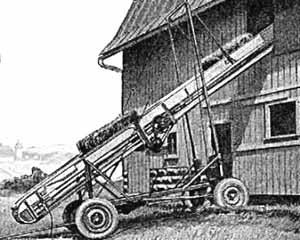Product (440)
- Roller Top Modular Conveyor (8)
- SS conveyor chains (5)
- Snap-On Top Plate Chain (6)
- Friction conveyor belt (10)
- Sideflex Chains (10)
- Flexible Chains (63)
- Thermoplastic Tabletop Chains (10)
- Plastic Chainbelt (1)
- Low Backline Pressure Chain (15)
- conveyor systems (4)
- Modular belt conveyor (182)
- Conveyor Chain (61)
- Friction top Modular Conveyor Belt (17)
- PVC Conveyor Belt (6)
- Conveyor Accessories (37)
- Others (5)
Exhibition (7)
Factory pictures (8)
Technical Communication (3)
Certificates (1)
Knowledge (5)
News (2)
Blog (13)
Credit Report
Products Index
Knowledge
History for conveyor belt

Primitive conveyor belts were used since the 19th century. In 1892, Thomas Robins began a series of inventions which led to the development of a conveyor belt used for carrying coal, ores and other products.
In 1901, Sandvik invented and started the production of steel conveyor belts. In 1905 Richard Sutcliffe invented the first conveyor belts for use in coal mines which revolutionized the mining industry.
In 1913, Henry Ford introduced conveyor-belt assembly lines at Ford Motor Company's Highland Park, Michigan factory.
In 1972, the French society REI created in New Caledonia the then longest straight-belt conveyor in the world, at a length of 13.8 km. Hyacynthe Marcel Bocchetti was the concept designer.
In 1957, the B. F. Goodrich Company patented a conveyor belt that it went on to produce as the Turnover Conveyor Belt System. Incorporating a half-twist, it had the advantage over conventional belts of a longer life because it could expose all of its surface area to wear and tear. Möbius strip belts are no longer manufactured because untwisted modern belts can be made more durable by constructing them from several layers of different materials.
In 1970, Intralox, a Louisiana based company, registered the first patent for all plastic, modular belting.
In 1901, Sandvik invented and started the production of steel conveyor belts. In 1905 Richard Sutcliffe invented the first conveyor belts for use in coal mines which revolutionized the mining industry.
In 1913, Henry Ford introduced conveyor-belt assembly lines at Ford Motor Company's Highland Park, Michigan factory.
In 1972, the French society REI created in New Caledonia the then longest straight-belt conveyor in the world, at a length of 13.8 km. Hyacynthe Marcel Bocchetti was the concept designer.
In 1957, the B. F. Goodrich Company patented a conveyor belt that it went on to produce as the Turnover Conveyor Belt System. Incorporating a half-twist, it had the advantage over conventional belts of a longer life because it could expose all of its surface area to wear and tear. Möbius strip belts are no longer manufactured because untwisted modern belts can be made more durable by constructing them from several layers of different materials.
In 1970, Intralox, a Louisiana based company, registered the first patent for all plastic, modular belting.
Pre Page:
Flexible conveyor systems
Next Page:
Different knowledge about conveyor




